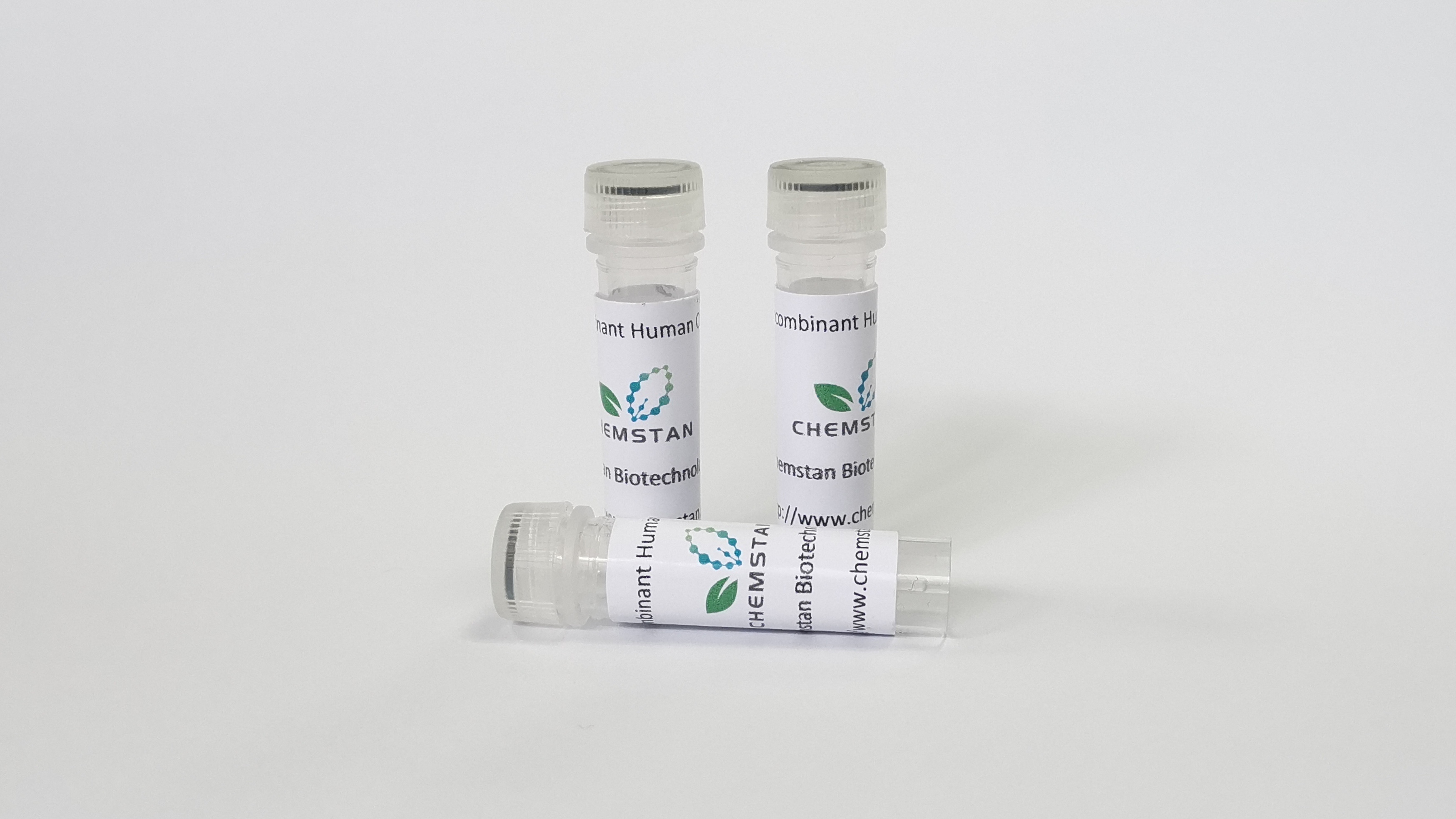
浏览量: 163
- 产品名称: Recombinant Human p53 protein
- 产品货号: CSP00199
- 货期: 现货
- 价格与订购: 1800
- 数量:
库存: 100
- 规格: 50μg 100μg 1mg
- 产品信息
- 如何订购
概述(Summary)
英文全称
Recombinant Human p53 protein
纯度(Purity)
>90% as determined by SDS-PAGE
内毒素(Endotoxin level)
Please contact with the lab for this information.
蛋白构建(Construction)
A DNA sequence encoding the human p53 (Asp7-Asp393) was fused with His tag
Accession #
P04637
表达宿主(Host)
E.coli
种属(Species)
Homo sapiens (Human)
预测分子量(Predicted Molecular Mass)
44.22 kDa
制剂(Formulation)
Supplied as solution form in PBS pH 7.5 or lyophilized from PBS pH 7.5.
运输方式(Shipping)
In general, proteins are provided as lyophilized powder/frozen liquid. They are shipped out with dry ice/blue ice unless customers require otherwise.
稳定性&储存(Stability &Storage)
Use a manual defrost freezer and avoid repeated freeze thaw cycles.
Store at 2 to 8 °C for one week .
Store at -20 to -80 °C for twelve months from the date of receipt.
Store at 2 to 8 °C for one week .
Store at -20 to -80 °C for twelve months from the date of receipt.
复溶(Reconstitution)
Reconstitute in sterile water for a stock solution.A copy of datasheet will be provided with the products, please refer to it for details.
背景(Background)
背景介绍
p53, also known as Tp53, is a DNA-binding protein which belongs to the p53 family. It contains transcription activation, DNA-binding, and oligomerization domains. p53 protein is expressed at low level in normal cells and at a high level in a variety of transformed cell lines, where it's believed to contribute to transformation and malignancy. p53 (TP53) is a transcription factor whose protein levels and post-translational modification state alter in response to cellular stress (such as DNA damage, hypoxia, spindle damage). Activation of p53 begins through a number of mechanisms including phosphorylation by ATM, ATR, Chk1 and MAPKs. MDM2 is a ubiquitn ligase that binds p53 and targets p53 for proteasomal degradation. Phosphorylation, p14ARF and USP7 prevent MDM2-p53 interactions, leading to an increase in stable p53 tetramers in the cytoplasm. Further modifications such as methylation and acetylation lead to an increase in Tp53 binding to gene specific response elements. Tp53 regulates a large number of genes (>1 genes) that control a number of key tumor suppressing functions such as cell cycle arrest, DNA repair, senescence and apoptosis. Whilst the activation of p53 often leads to apoptosis, p53 inactivation facilitates tumor progression. It is postulated to bind to a p53-binding site and activate expression of downstream genes that inhibit growth and/or invasion, and thus function as a tumor suppressor. Mutants of p53 that frequently occur in a number of different human cancers fail to bind the consensus DNA binding site, and hence cause the loss of tumor suppressor activity. Defects in TP53 are a cause of esophageal cancer, Li-Fraumeni syndrome, lung cancer and adrenocortical carcinoma.
分子别名(Alternative Names)
Cellular tumor antigen p53,Antigen NY-CO-13,Phosphoprotein p53,Tumor suppressor p53.
Note
For research use only .

 地 址:
地 址: 产品销售:
产品销售: E - mail :
E - mail : 邮 编:
邮 编:
 Amily
Amily


